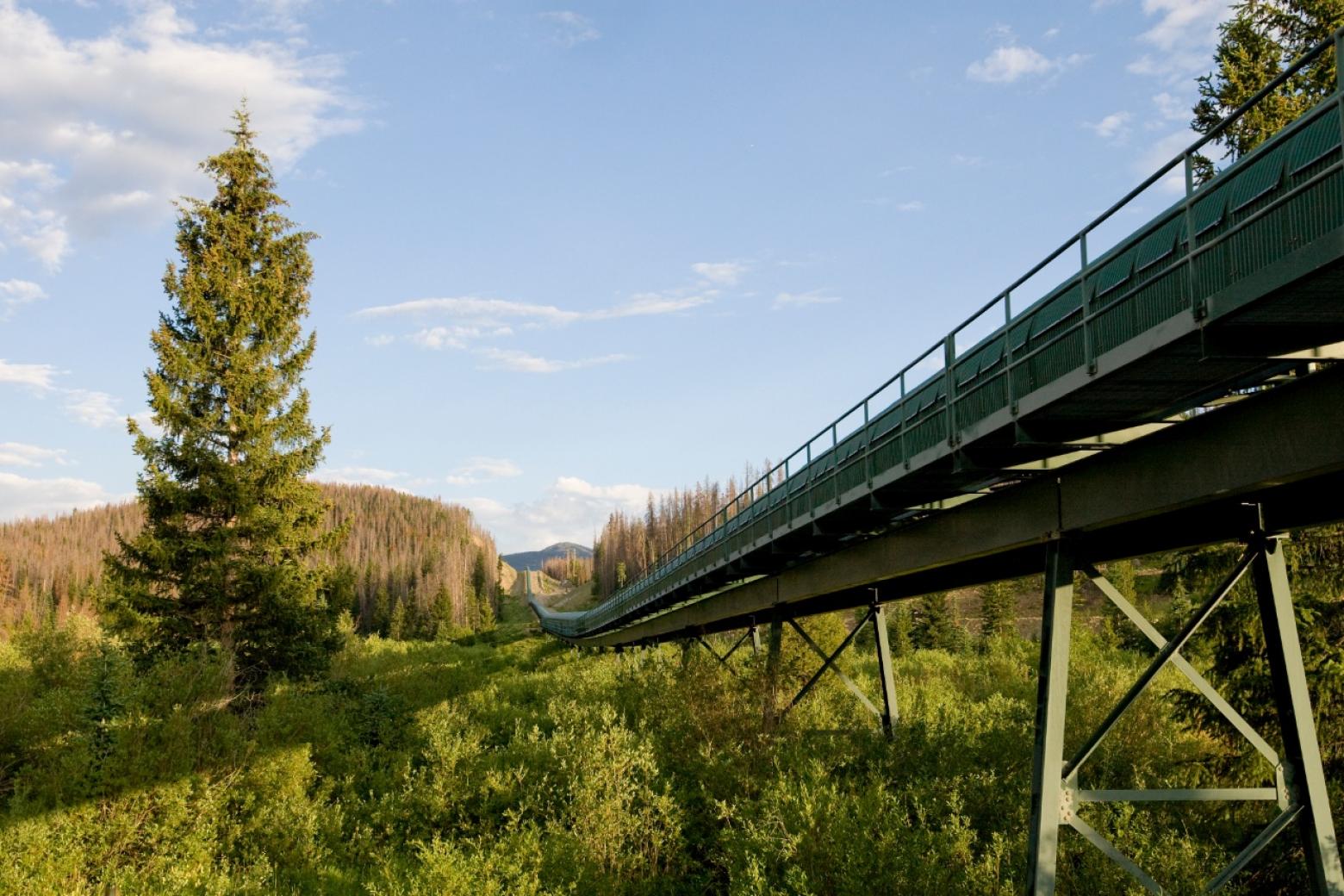For the second year in a row, Climax Molybdenum engaged Colorado School of Mines students to think outside the box about the company’s Colorado assets
A manufacturing plant that upcycles Henderson mine tailings into high-value flat glass products was the winning idea of the 2019 Henderson Sustainable Development and Entrepreneurship Challenge.
For the second year in a row, Climax Molybdenum, a Freeport-McMoRan company and owner of the Henderson mine and mill, engaged Colorado School of Mines students to think outside the box about the company’s Colorado assets and their future after eventual mineral depletion.
In 2018, the students focused on the Henderson mine in Clear Creek County. This year, the challenge shifted across the Continental Divide to Grand County and the mill facilities that process the Henderson molybdenum ore.
The $25,000 grand prize-winning idea, Tailings to Glass, proposed harnessing the roughly 280 million tons of tailings, currently stored at the Henderson mill as a feed stream, for the production of flat glass for windows, doors, mirrors, solar panels and more.
Tailings is a by-product of mineral processing. At Henderson, the tailings content is more than 50 percent quartz, or crystallized silica, which is the main ingredient in the most widely used type of glass. Once purified, quartz from the tailings would be mixed with 50 percent recycled glass to lower energy costs and extend the tailings supply.
“Climax Molybdenum is a long-time partner with Colorado School of Mines and this challenge is another step in promoting learning and awareness about the importance of the industry and its capability to deliver real value to the state and local communities, both during and post mining,” said Mike Kendrick, President-Climax Molybdenum. “This program also encourages innovation in resource stewardship and reuse, collaboration with local communities, and practical opportunities for economic development that can deliver enduring social and environmental benefit in the counties where we operate.”
In addition, the competition gives Mines students the opportunity to take what they have learned to develop real-world, innovative sustainability solutions.
“This challenge represents a one-of-a-kind opportunity for students and faculty to apply classroom and theoretical knowledge to a real-world scenario by envisioning concepts for post-mining asset use that yield attainable economic results for industry and community,” said Bill Cobb, Vice President-Environmental Services and Sustainable Development-Freeport-McMoRan. “The initiative brings to bear fresh thinking and a diversity of ideas that might not otherwise be explored, many of which may be viable even in advance of closure, which is a win-win situation.”
In operation since 1976, the Henderson mine and mill is one of the largest primary producers of molybdenum in the world and a major economic driver for the region. Student concepts in the competition were required to provide a socioeconomic benefit to the surrounding communities, as well as be economically sustainable, socially acceptable and provide a positive, lasting legacy in the state of Colorado.
The final five student teams presented their ideas and business cases on Dec. 5, 2019, to a panel of judges from Freeport-McMoRan, Climax Molybdenum, Henderson operations and the Grand County community.
Members of the winning team included Michael Caplan, a master’s student in metallurgical and materials engineering; Brian C. Davis, a PhD student in materials science; Michael Knight, a PhD student in materials science; Meghan Cameron, a senior majoring in mechanical engineering; and Alexander Merritt, a senior majoring in mechanical engineering.
Their inspiration came from the work of Metallurgical and Materials Engineering Research Professor Ivan Cornejo on what Cornejo called “trash to glass.” “We thought we could take that core idea and make some real progress on it,” Davis said.
The team did extensive research and physical lab work to provide proof of concept – from attending a glass industry conference to actually melting glass from Henderson tailings in Hill Hall.
“Tailings are an available resource, especially with the diminishing amount of easily available silica worldwide,” said Cameron, who grew up in Grand County. “We can make use of what we have. This was a large lesson in innovation and creative problem solving. We were able to create a specific idea to address all the needs of the challenge, whether it was the community aspects, the land use aspects or all the engineering aspects.”
The second- and third-place teams took a more agriculturally rooted approach to repurposing the mill’s 10,300 acres near Parshall:
$15,000 second prize: Rocky Mountain Organics
Project: An organic shrimp farm and hydroponics-based agriculture research/educational facility for smart farming
Team Members: Patrick Meier, master’s student in mining engineering; Clemens Rainer, PhD student in petroleum engineering
$10,000 third prize: Growth and Production
Project: Hydroponic hemp farm and cannabidiol (CBD) oil production facility
Team Members: Aurora Waclawski, senior majoring in environmental engineering; Paige Kadavy, senior majoring in mechanical engineering; Erin Smethers, junior majoring in mechanical engineering; Nicholas Laurita, senior majoring in mechanical engineering
“We want to give a big thanks to our partners at Freeport-McMoRan, Climax Molybdenum and the Henderson mine for giving Mines students another wonderful opportunity to tackle a real-world challenge in Colorado,” said Priscilla Nelson, professor of mining engineering at Colorado School of Mines. “As always, our students shined in terms of problem solving, teamwork and entrepreneurial skills, and we are so proud of all the hard work they put in to developing these innovative and sustainable solutions.”
By:Emilie Rusch, Public Information Specialist, Colorado School of Mines
